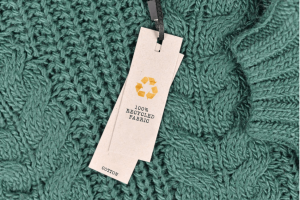
Step into the world of sustainable shoe materials where style meets eco-conscious choices. From innovative designs to reducing the carbon footprint, get ready to explore the future of footwear in a whole new light.
Discover how sustainable materials are revolutionizing the shoe industry and paving the way for a greener and more stylish tomorrow.
Sustainable Shoe Materials

Sustainable shoe materials refer to materials that are environmentally friendly and have a minimal impact on the planet during production, use, and disposal. These materials are often biodegradable, renewable, recycled, or produced using sustainable practices.
Examples of Eco-Friendly Materials
- Bamboo: Bamboo is a fast-growing plant that requires minimal resources to grow and is biodegradable.
- Recycled PET: PET plastic bottles can be recycled into yarns used in shoe uppers.
- Pineapple Leather (Pinatex): Made from pineapple leaf fibers, this leather alternative is sustainable and cruelty-free.
- Organic Cotton: Cotton grown without the use of synthetic pesticides and fertilizers is a more sustainable option for shoe production.
Benefits of Using Sustainable Materials
- Reduced Environmental Impact: Sustainable materials help reduce pollution, energy consumption, and waste generated during the manufacturing process.
- Resource Conservation: Using renewable materials like bamboo helps conserve natural resources and reduces the strain on the environment.
- Healthier for Workers and Consumers: Sustainable materials are often produced using safer practices, benefiting both those involved in production and the end-users.
- Enhanced Brand Image: Brands that prioritize sustainable materials are viewed more favorably by eco-conscious consumers and can differentiate themselves in the market.
Eco-friendly Shoe Design
When it comes to eco-friendly shoe design, sustainable materials play a crucial role in shaping the overall look, feel, and functionality of the footwear. Designers are increasingly incorporating eco-conscious practices and materials into their creations to reduce the environmental impact of the fashion industry.
Influence of Sustainable Materials on Shoe Design
Eco-friendly shoe design focuses on using materials that are sourced and produced in a sustainable manner, such as recycled plastics, organic cotton, hemp, cork, and bamboo. These materials not only help reduce waste but also offer unique textures and aesthetics to the shoe design.
Compared to traditional shoes, eco-friendly footwear often requires a more thoughtful and creative design process. Designers need to consider the environmental impact of each material used, as well as the overall lifecycle of the product. This holistic approach to design ensures that every aspect of the shoe, from the materials to the manufacturing process, aligns with sustainable practices.
Innovative Design Techniques
- Upcycled Materials: Designers are repurposing materials like old tires, plastic bottles, and discarded fabrics to create stylish and durable shoes.
- Bio-based Materials: Biodegradable materials such as mushroom leather, pineapple fibers, and apple peels are being used to create eco-friendly footwear options.
- Minimalist Design: Embracing simplicity and functionality, minimalist shoe designs reduce material waste and focus on essential elements for a sustainable approach.
- Modular Construction: Shoes with interchangeable parts allow for easy repairs and customization, extending the lifespan of the footwear.
Environmental Impact
Environmental impact is a crucial consideration in the production of shoes, as the use of non-sustainable materials can have detrimental effects on the planet. These materials often come from non-renewable sources, leading to resource depletion and increased carbon emissions during manufacturing and disposal processes.
Impact of Non-Sustainable Shoe Materials
Non-sustainable shoe materials, such as synthetic plastics and chemically treated leathers, contribute significantly to environmental degradation. The extraction of petroleum for plastic production and the use of toxic chemicals in leather tanning release harmful pollutants into the air, water, and soil. Additionally, the disposal of these materials results in non-biodegradable waste that lingers in landfills for years.
- Plastic pollution from synthetic materials contaminates oceans and harms marine life.
- Toxic chemicals from leather tanning pollute water sources and pose health risks to communities.
- Non-biodegradable waste from shoe disposal contributes to landfill overcrowding and soil contamination.
Importance of Reducing Carbon Footprint in Shoe Production
Reducing the carbon footprint in shoe production is essential to mitigate climate change and minimize environmental harm. Sustainable practices, such as using eco-friendly materials like organic cotton, recycled rubber, and plant-based alternatives, can significantly lower greenhouse gas emissions and resource consumption throughout the supply chain.
- Switching to renewable energy sources for manufacturing reduces reliance on fossil fuels and decreases carbon emissions.
- Implementing efficient production processes and minimizing waste generation helps conserve resources and reduce environmental impact.
- Choosing sustainable materials over non-sustainable options reduces the overall carbon footprint of shoes and promotes eco-conscious practices in the fashion industry.
Contribution of Sustainable Materials to Lowering Environmental Impact
Sustainable materials play a vital role in lowering the environmental impact of shoes by offering eco-friendly alternatives to traditional non-sustainable options. Materials like organic cotton, hemp, recycled polyester, and natural rubber are biodegradable, renewable, and less resource-intensive, making them ideal choices for environmentally conscious footwear production.
- Organic cotton cultivation reduces pesticide use and water consumption, minimizing environmental harm and promoting soil health.
- Hemp is a fast-growing plant that requires minimal water and pesticides, making it a sustainable choice for shoe materials.
- Recycled polyester derived from post-consumer plastic waste helps reduce landfill accumulation and energy consumption in production processes.
- Natural rubber sourced from responsibly managed forests supports biodiversity conservation and reduces deforestation impacts on ecosystems.
Sustainable Brands
When it comes to sustainable shoe materials, several popular shoe brands have been leading the way in prioritizing eco-friendly practices. These brands not only focus on using sustainable materials but also implement various initiatives to reduce their environmental impact.
Popular Sustainable Shoe Brands
- 1. Adidas: Adidas has been incorporating recycled materials like ocean plastic into their shoes, with initiatives like the Parley for the Oceans collaboration.
- 2. Allbirds: Allbirds is known for using materials like wool and eucalyptus fibers in their shoes, focusing on sustainability and comfort.
- 3. Veja: Veja uses ethically sourced materials like organic cotton and sustainable rubber in their sneakers, promoting transparency and fair trade practices.
- 4. Rothy’s: Rothy’s creates shoes using recycled plastic bottles, aiming to reduce waste and promote a circular economy.
Successful Sustainability Initiatives
- 1. Nike’s “Move to Zero”: Nike has set ambitious sustainability goals, including using more sustainable materials and reducing carbon emissions in their production processes.
- 2. Reebok’s Cotton + Corn Collection: Reebok launched a collection of shoes made from plant-based materials like cotton and corn, focusing on biodegradability.
- 3. Puma’s InCycle Collection: Puma introduced a collection of biodegradable shoes and apparel, emphasizing the importance of sustainability in the fashion industry.
Consumer Response
- 1. Increased Demand: With growing awareness about environmental issues, consumers are showing a preference for brands that prioritize sustainability in their materials and practices.
- 2. Brand Loyalty: Customers tend to develop loyalty towards brands that demonstrate a commitment to sustainability, leading to repeat purchases and positive word-of-mouth recommendations.
- 3. Influence on Industry: The success of sustainable shoe brands has influenced other companies in the industry to adopt eco-friendly practices and materials, creating a ripple effect towards a more sustainable future.
Clothes and Shoes

When it comes to sustainable materials, both clothes and shoes play a significant role in the fashion industry. While both sectors strive to reduce their environmental impact, the use of sustainable materials can vary between them.
Use of Sustainable Materials
- Clothing brands often incorporate organic cotton, hemp, bamboo, and recycled fabrics in their designs to promote sustainability.
- Shoe manufacturers, on the other hand, focus on materials like recycled rubber, cork, and plant-based alternatives such as pineapple leather and mushroom leather.
Challenges in Sourcing Sustainable Materials
- Clothing companies face challenges in tracing the origins of materials, ensuring fair labor practices, and reducing water usage in production.
- Footwear brands encounter difficulties in finding durable and eco-friendly alternatives to traditional leather and synthetic materials, as well as addressing the complexity of shoe construction.
Brands Excelling in Sustainability
- Patagonia is a well-known brand in the clothing industry that excels in sustainability by using recycled materials and promoting fair trade practices.
- Veja is a shoe brand recognized for its sustainable practices, including using organic cotton, wild rubber, and recycled plastic bottles in their footwear.
Final Thoughts
Take a step towards a more sustainable future with these eco-friendly shoe materials that not only look good but also do good for the environment. Embrace the change, one stylish step at a time.
Top FAQs
Are sustainable shoe materials durable?
Yes, sustainable shoe materials are designed to be durable, offering long-lasting quality while being environmentally friendly.
How do sustainable materials impact shoe design?
Sustainable materials influence shoe design by inspiring innovative and creative approaches, leading to unique and stylish footwear options.
Which brands prioritize sustainability in their shoe materials?
Popular brands like Adidas, Nike, and Allbirds are known for prioritizing sustainability in their shoe production processes.
What is the environmental impact of non-sustainable shoe materials?
Non-sustainable shoe materials contribute to pollution, resource depletion, and environmental harm, highlighting the importance of shifting to eco-friendly alternatives.


.jpg?w=700)


